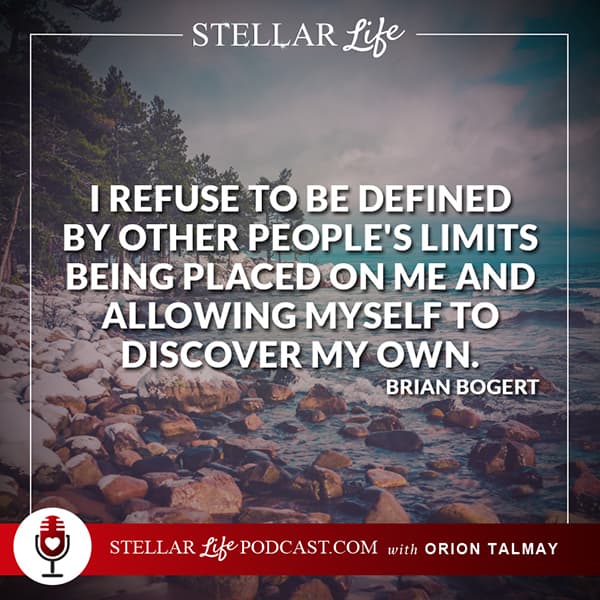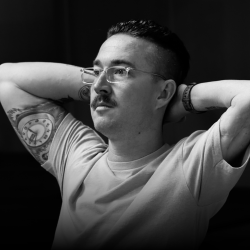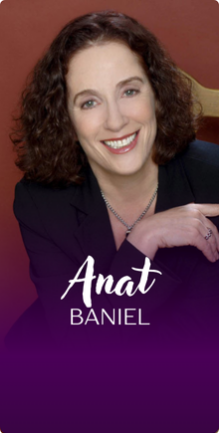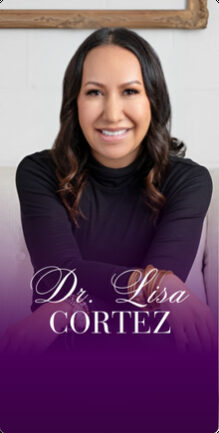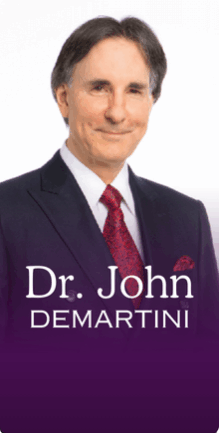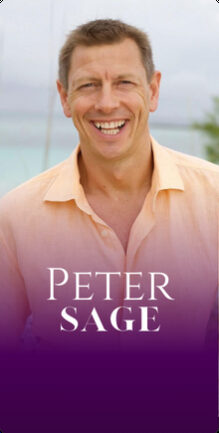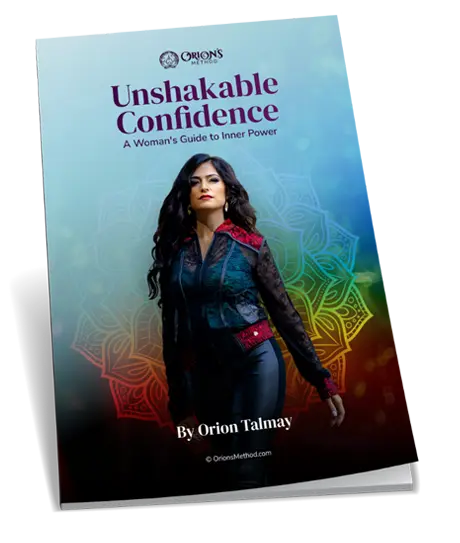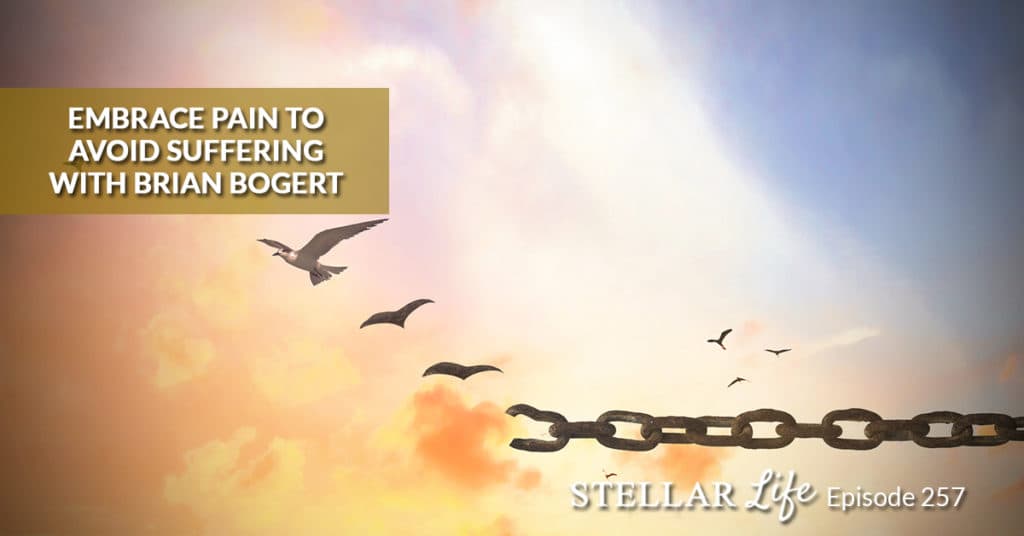
In this Episode
- [01:21] Orion introduces Brian Bogert, a passionate human behavior and performance coach, speaker, business strategist, top sales professional, and philanthropic leader who helps individuals achieve their most authentic selves.
- [05:56] Brian shares two primary lessons that led him to where he is today.
- [10:05] Brian explains what No Limits Living means.
- [15:59] Apart from a strong mindset, human connection is also essential in overcoming challenges.
- [20:42] The process of embracing your heart and how to do it daily.
- [26:27] Brian shares the secrets on how he became disciplined.
- [31:53] What emotional triggers look like and how you can deal with them.
- [35:15] Brian shares his tips for living a stellar life: know who you are and find a way to give.
- [36:40] Visit Brian Bogert’s website and No Limits Prelude to learn how you can achieve your authentic self. You can also follow him on Facebook, Instagram, Twitter, LinkedIn, and YouTube.
About Today’s Show
Hey, Brian, and welcome to the Stellar Life podcast. Thank you so much for being here.
I’m happy to be here, Orion.
Thank you. Before we begin, can you share a little bit about your path and what led you to where you are today?
I’m going to ask you and everybody who’s listening to just close your eyes for a second. I want you to imagine going to a store, having a successful shopping trip, heading out to your car. As you walk out the door, you raise your head to the sky, you feel the sun hit your skin, you feel the breeze through your hair. You got a little pep in your step because you know you’re going to go onto a bright, beautiful day.
As you get to your car, you’re fumbling for your keys. As you’re getting ready to unlock it, get in and go on with your day, you turn your head and you see a truck barreling 40 miles an hour right at you with no time to react. Go ahead and open your eyes. That’s where this portion of my story begins.
No limits living is about allowing ourselves to get in alignment with who we are, who we’re serving, and who we're doing this for. Share on XMy mom, my brother, and I went to our local Walmart to get a one-inch paint brush. As we were headed back to our car, anybody who’s known me for two-and-a-half seconds can tell you that I’ve always had an excitement, vigor for life. Of course, I was the first one with the car. I wanted to get home and put that paintbrush to use.
As I was standing there waiting for my mom and brother to catch up, who was only a couple of feet behind me, this was back in the days before there were key fobs. She couldn’t unlock the door from a distance. I had to wait for her to catch up, put the key in the door so we could go on with our day.
Now we were parked in an end spot. As we were standing there waiting for her to unlock the doors, a truck pulled up in front of the store, parked, and the middle passenger and the driver got out. Passengers all the way to the right felt the truck move backward. He did what any one of us would do, Orion. He put his foot on the brake, but instead, he hit the gas. A combination of shock and force threw him up on the steering wheel, up on the dashboard, and before you know it, he’s catapulting across the parking lot, 40 miles an hour right at us with no time to react.
He went up over the median and the end spot we were in. He went up over the tree, hit our car, knocked me over, ran over me diagonally, tore my spleen, left the tire tracks on my stomach, and continued on to completely sever my left arm from my body. There I was laying in the parking lot on a 115-degree day in Phoenix, Arizona.
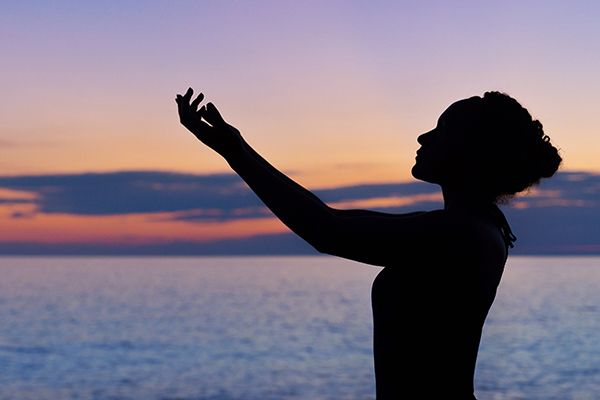
My mom and brother watched this whole thing happen. They look up and they see my arm lying in the parking lot 10 feet away. Fortunately, for me, so did my guardian angel. She saw the whole thing happen. There was a nurse that walked out of the store right when this took place. I’m forever indebted to this woman for choosing to move into action versus choosing to turn her head and just go on with their day. Because she saw the literal life and limb scenario in front of her and she rushed immediately into action.
She came over and stopped the bleeding on the main wound and saved my life, and she instructed some innocent bystanders to run inside, grab a cooler, fill it with ice, and get my detached limb on ice within minutes to give me a fighting chance of having a reattached limb. Had she not done one or both of those things, Orion, either I wouldn’t be here with you today, or I’d be here with you today with a cleaned-up stump. That’s just the reality.
I know a lot of people weren’t expecting it to go there today. I can tell you definitively that I know I have a very unique story. What I also know is the more I’ve done this, the more I realized we all have unique stories. What’s important is that we pause and become aware of the lessons we can extract from our stories and then become intentional in how we apply them in our lives. We all have the ability to do that.
We also all have the ability to tap into the collective wisdom of other people’s stories to shorten our own curve to learning. I’m going to share with you two primary lessons that led me into where I’m at today, and then we’ll take it wherever we need to go.
I learned not to get stuck by what has happened to me.
The first is I learned not to get stuck by what has happened to me but instead get moved by what I could do with it. The second I didn’t realize until far later. You see it’s 7, 8, 9, 10, 11, 12 years old, although I was the one having surgeries done to me, although I was the one having to go to physical and occupational therapy, I was also being guided through the process. I was a little bit in a fog, but my parents were not.
They were intimately aware of the unceasing medical treatments, years of physical therapy. The idea of seeing their son grow up without the use of his left arm was a great source of potential suffering for them. They willed themselves day in and day out to do what was necessary, to do what was tough, to embrace the pains required to ultimately strengthen and heal me. Whether it was intentional or not, what they did was ingrained in me a philosophy and a way of living, which was to embrace the pain to avoid suffering. I believe when this is done correctly, that’s also where we gain freedom.
It was these two lessons that I used to not only overcome this unique injury but how my business partners and I scaled our last business to over 15 million within the span of a decade. Now how I flip that on its head as a human behavior and performance coach to help individuals like you or like everybody listening, become more aware, more intentional, and who they already are with their most authentic selves.
You see, I believe that’s when the door starts to correct perspective, motivation, and direction. I believe that’s when people can allow joy, freedom, and fulfillment to enter their lives holistically. That’s why all of our entities are focused on a mission to impact a billion lives by 2045. Because I believe that if we reduce the level of suffering on this planet, allow joy, freedom, and fulfillment to enter into their lives, that’s when people can stand on their own two feet, not only confident but convicted in who they are. Knowing that the world is not going to just accept them, but will embrace them for exactly who they are.
That’s when vulnerability and authenticity, which is the glue that binds human connection comes into the forefront and we start to leave a ripple effect for a much better world for my kids, their kids, and the kids after that. That’s a little bit about me and what got me onto my path to what I’m doing today. I’m sure you can tell, there’s a lot of context that gets filled in between there. That’s a little bit about who I am.
I learned not to get stuck by what has happened to me, but instead get moved by what I could do with it. Share on XWow, thank you so much for sharing this in such a brilliant way. Oh my God, how awful and how miraculous. It’s like you saved your parent’s lives. It was your mom and your brother, you saved their lives, and then they saved yours. In the teachings of what you have been going through, you saved their lives again on a different level.
Well, I’m now in the impact phase in my life trying to impact as many lives as I possibly can. It’s not lost on me—the sacrifice, the focus, the intention that it took on their part. It’s also not lost on me how lucky I am.
Is your arm fully functional right now?
It’s practical use function. I do everything. Literally, one of the most complicated things for me to do is cut a steak. Outside of that, I play sports, I live on the edge of life. Really, a lot of this has structured a lot of my beliefs into this world. We have this concept of No Limits living that we teach, and really help make sure that other people can understand that we’re capable of far beyond the limits we placed upon ourselves and certainly beyond the limits our world places on us.
Yes, I have full practical use of it. It doesn’t stop me from anything. I lift my kids up above my head with that arm.
How many kids do you have?
I have two—seven and five.
Nice. Oh, sweet. Mine is almost two.
Congratulations. They’re a pure gift.

What a legacy you’re leaving them. That’s beautiful. Well, I have so many questions, but let me go back. When did you embrace the idea that you are limitless?
It’s only truly been embodied in me over the last few years, but it’s been a process of getting myself there. I wouldn’t say that I’m limitless. I have to give that clarification. When we talk about No Limits living, it’s not to suggest that I or anybody else can do anything. Let’s be honest here, my arm got ripped off. I can’t play professional basketball. Now, can I go on the court and play at a competitive level with people and still push myself beyond my limits? Of course, I can. Can I play basketball, potentially touch the rim, dunk, do different things because I want to? Of course, I can.
Am I going to be one of the best NBA players that ever walked this planet? Absolutely not. No Limits living is not to suggest that we can all do anything. It’s about allowing ourselves to get in alignment with who we are, who we’re serving, who we’re doing this for. Because when we can start to move through that path, we are capable of far more than we’ve ever been able to believe we are. I started that concept because the second my accident happened, the world viewed me through the lens of what they’d be capable of in my scenario.
I was immediately being put into boxes based on their belief of what they would be capable of without even contemplating my own abilities, what my limitations are, what I’m capable of given the scenario I’m dealing with. That’s no different than anybody who’s got financial loss, divorce, anxiety, or whatever. The world literally tries to tell us or put impressions upon how we’ll manage and move through that.
I refused to be put into a box. I refuse to be defined by other people’s limits being placed on me, and allowing myself to truly discover my own. That’s what No Limits living is about. It’s about aligning with who you are. It’s about chasing the things that you care about. It’s about realizing that you can push through limitations, whether it be emotional, physical, spiritual, or perceived in every area of our lives so that we can live holistically as who we are. It’s the world that tries to steal that from us. It’s been a long time coming where I’ve been able to demonstrate that, but I’m living by the definition of No Limits, living more now than I have at any other point in my life.
It looks like I’m having the best health I’ve had in my life.
Can you share with me a little bit about what it looks like for you to have No limits living?
It looks like having the best health I’ve had in my life. It looks like having the best marriage and relationship I’ve had in my life. It looks like having more patience, empathy, compassion, and intention with my children than I’ve ever had. It looks like allowing myself to trust, surrender, and breathe that what I see, what I know, what I believe is absolutely something that I can lean on. That goes to relationships, that goes to the ability to build businesses, that goes with my ability to coach, speak, and infuse life into other people.
It allows me to realize that I can go live and physically do things beyond what many people expect, and often will know that it’s places that I get joy, freedom, and fulfillment. What No Limits living looks like for me right now is truly allowing myself to be the vessel for what needs to happen in my world. It’s truly about allowing what needs to happen, what will happen, what’s meant to happen, and what I can influence and control to actually come to fruition.
As I elevate my level of consciousness, it’s the ability to allow wisdom to flow through me versus having to access knowledge. It’s about understanding that my emotional triggers don’t pull the trigger on me and make me react. It’s that I get to pull the trigger on my emotional triggers and choose to respond. So that I can repair and build healthy, lasting, trusting relationships because our relational currency—the way we show up in the world, and the way we allow our emotions to define and dictate who we are in the world—really is how we can connect with everybody and everything.
That’s what No Limits living is. I am no longer living in the confines, the boundaries of limitations of myself, or the world in a way that I’ve never experienced.
That’s beautiful. At the time when the world put you in boxes and energetically you felt as a boy, as a teenager, as a young man, what happened in your mind? What happened with your mindset that said, no, I’m not willing to take it. I’m going to break out of those boxes?
Truthfully, that was something that happened really early because I’d be standing there with a sling in a couple of months after initial reattachment after we were going through some of the initial recovery. Inevitably, when you’re walking around with a sling, you have people ask you, what happened to your arm, what happened to your arm?
I refused to be put into a box. I refuse to be defined by other people's limits being placed on me and allowing myself to truly discover my own. Share on XRight out of the gate, I just said it. As a matter of fact, I was run over by a truck and my left arm was torn off. But from a seven-year-old, nobody believes a story like that. Immediately, I was questioned and immediately, whether or not I was even speaking the truth, was being validated when they would look over to my parents and ask, that sounds crazy. Every time they’d have to say, yeah, that’s true. Then immediately they would start to feel sorry for me, and they wonder how I was able to do things.
In school, growing up, and on the playground, all these times where people just figured I couldn’t play sports, I couldn’t hang with everybody else. So it became one of those times where I was like, you know what, this is what I’m going to do. You asked a very good question. You probably asked a question that was more intuitive than you even know because I will tell you that mindset was all that got me through that next period of time.
Mindset is also what bit me over that next period of time because what I did as a result of it was create a mindset and an intellectual narrative that I’m good, I’m tough, I’m strong, I can do anything myself. That mindset, I believe that if I had an intellectual narrative and a strong mindset that I could overcome anything I set my mind to, I could do it. By the way, that served me very well for a very long time because I did, and mindset is a critical part of the equation.
So in no way, when I say this, do I want this to come across as minimized. But I did that very, very well to the point that I didn’t realize how strong that narrative was in the world. When I was 20 years old, I rebroke my arm in the exact same spot snowboarding.
No way, ouch.
I went ten months with it hanging by my side. I went through seven surgeons who were all afraid to touch me because of the medical malpractice and what that looked like. Now as an adult, I’m experiencing a lot of the same things that I did as a seven-year-old without the same structure, without the same sport, without being guided, so I was no longer in a fog.

I realized that in the time when I needed the help most, when I wanted people in my life. It’s not that I don’t have friends, I didn’t have family, I’d have tons of them, but everybody else bought into my narrative. When I felt isolated, alone, feeling wondering, and getting resentment as to why people weren’t showing up, I had to realize that it was actually my fault because they believed that Brian was good, Brian was strong, Brian was capable, and he didn’t need any of our help.
At the time when I was most vulnerable, I also didn’t have the courage to ask for it. That began the next journey of my life, which was to really start to understand that mindset is not the only thing that matters, although it is a critical piece of the component.
What else matters?
I believe that that next period of time when I realized that I was alone and isolated, that it wasn’t about our intellectual narratives, it was about human connection. I focused deeply on those concepts that I referenced in my initial story around vulnerability and authenticity. Which was that if I could demonstrate vulnerability, if I could show up authentically to who I am, and I could encourage others to do the same, that my connection with people would be better.
Oh, by the way, I learned how to do that very, very well. I mastered it. It was fantastic. Then you fast forward a little bit, another 10 years go by—10, 13, 12 years, somewhere in there—I started to realize that when I shut off physical pain to cope because the demands in my environment were far exceeding my ability to cope at 7, 8, 9, 10, 11, 12 years old. When I shut off physical pain, I also shut off emotional pain and I didn’t realize it.
Can you expand on that?
I’m going to expand on it, absolutely. I had some other health stuff that impacted me a few years back that I won’t go deep on, but I’m good now and it took me years to figure it out. But it ultimately impacted my intellect and my energy, which are two things I rely heavily on. My sense of self was in question, but I also started to feel in a way that I didn’t ever feel before. After 10 years with my wife at that point, she was like, dude, you don’t feel anything and I always never understood that because I felt so deeply.
I believe that if we reduce the level of suffering on this planet and allow joy, freedom, and fulfillment to enter into our lives, that's when people can stand on their own two feet. Share on XThen as I’m going through this process, I’m playing with my daughter, she was one or two at the time. She was speaking, so she must have been around two. She’s turning six soon. I said five earlier, but sorry, I digress. We’re playing and having fun and just having the time of our lives laughing, cuddling. We laid on the couch, and she put her arm around my neck, leaned back, kissed me on the cheek and said, “I love you, Daddy,” and I broke down in tears.
I’d never at that point in my life—at least to my knowledge—had broken down in tears based on pure joy. When I realized that I had never experienced joy to the level that would make me cry, it also made me realize that if I’m not experiencing one end of the emotional spectrum, I’m certainly not experiencing the other. It also made me realize that fear, pain, despair—all these other things that I never understood or I thought I did, I really hadn’t felt in their pure capacity.
A human connection without emotion isn’t a human connection.
I started to unpack emotions at a very deep level, which is when I also started unpacking shame at a very deep level. I’ll get into that in a second. When I did this, it made me realize that human connection without emotion isn’t really a human connection. I’d mastered it from a strategic and tactical standpoint. That vulnerability and authenticity I had mastered, but I hadn’t embodied it. I was sympathetic at this time, not empathetic.
I wasn’t connecting through the same level of compassion, it was through observation. When you take the emotional intelligence, I had to develop in the beginning part of my life to be able to deflect, to be able to orchestrate scenarios. The attention wasn’t on me, I wasn’t the center of attention. I didn’t have to prove what I was capable of every minute—shifting to an element of learning, how to get other people to let their walls down from a purely strategic and tactical standpoint. When you layer that with emotion, it all of a sudden starts coming full circle.
What I realized is that it’s not just about mindset. Mindset only gets you so far. Those that truly truly reach the top level of performance, those that truly can live No Limits living, those that truly can trust, surrender, and breathe through the moments in their life are not those that just have a strong mindset. They’re also not those that just have a strong heart set.
The reality is all of us are hardwired to operate intellectually or emotionally stronger. But it’s up to us to then take a step back and make sure we’ve got the mind-body connection. To make sure that we can think about our thinking, think about our feelings—feel our thinking and feel our feelings. It’s in that quadrant that success happens. It’s also when we can start to rely on the question, is my intellectual and my emotional narrative true at this moment?
Which one should I trust more based on the scenario that is in front of me? That’s where we’re able to start to see things clearly so that we can start to free ourselves from the burdens. That’s the pathway that started to unpack there. Like I said, shame was a part of that, happy to go into that as well. It started with the mindset and it evolved into a complete self. That’s what I’m trying to encourage the whole world to do.
Feel our thinking and feel our feelings.
I would like to talk about shame and before we get into shame, what was the process of embracing your heart?
A very difficult and challenging one that I still face on a daily basis. The thing is we are products of our behavioral patterns, our emotional triggers, and our environmental conditioning. I don’t care how old you are right now. If you’re listening to this, the reality of it is that you need to understand that if you’re 30, 40, 50, 25, that means that’s how many years of patterning and conditioning you have in your life. When I shut off emotional pain, I shut it off for 30 years. You don’t just flip a switch and all of a sudden, it’s back.
What do you do every day? Is this just awareness, just by being aware of your awareness?
I’m going to give you specifics, I promise, but I wanted to help people understand that the gate is really hard and it’s a never-ending cycle. It’s a matter of raising your level of awareness with yourself, understanding outside awareness. It’s about sitting in silence so you can truly see things clearly.
It’s about questioning what’s true in every moment. It’s about identifying emotional triggers, how they manifest in your body, how you tie those patterns in your life as to what actually triggers you in those moments. It’s about helping you truly start to understand how much you are actively or passively suppressing emotion in every moment because of what the world has told us to do, which is to shut down and show up with a smile on.
Once you start to raise this to a level of awareness, you can start to be intentional with it. That’s what I started to realize when I actually started to feel emotion for the very first time because it was overwhelming because I was feeling it very raw. I also started to notice how much I was actively suppressing it and I didn’t even know it.
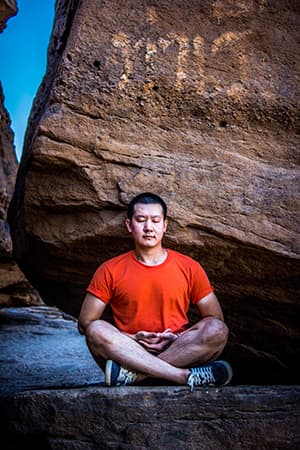
I had to allow myself to feel in those moments, sit with the emotion, sit with what was bubbling up in my body instead of just moving through it and put a smile on. Because in order to heal, we must feel truthful. We have to feel in order to heal. Whether you aren’t feeling emotion, you’re limiting an emotion, you’re protecting yourself, you’re putting armor up, that’s the thing about protecting ourselves, not being vulnerable, not being authentic.
It’s putting our armor up that we think is protecting us, but what’s really happening is we’re actually progressively carrying a heavier and heavier weight that’s crushing us slowly over time. If you start to realize that, there’s no option other than to escape it and start to shed the layers of that armor.
You were saying that you sit with the emotion. What does it mean to sit with the emotion? You just sit in meditation? How long do you sit with the emotion?
I wish I could tell you there’s a defined answer, but it’s contextual and situational, but I do both. I will meditate on things that I’m feeling that I don’t get clarity on. I’ll go to sensory deprivation tanks to get even a heightened level of consciousness. I’ll work with my meditation coach on guided practices that might lead me somewhere else. I’ll pivot between visualization, concentration, and true meditation, which are really the three principles that connect the idea of what we call meditation.
I will journal, I will focus, I will ask for outside influence. I will do anything I can to see what’s happening as clearly as possible. Once I see it clearly, I then can be intentional with it and I often have known what to do with it. The problem is I don’t know what to do if I can’t see it. That’s the thing about awareness. We process 11 million bits of information per second, but we’re only consciously aware of about 40. We’re largely led by the unconscious.
Until we give ourselves techniques, strategies, pathways, and intentional processes to move the unconscious to the conscious, to move the unaware to the aware, it’s going to feel like we’re victims, it’s going to feel like we’re fake, it’s going to feel like we have no influence to control over our destinies. So much of what I do is really about making sure that I’m as aware as possible, as holistically aware as possible, mind, body, spirit, soul, outside perception, perception, all of those things. If we can put ourselves in a position to understand them, then we can evolve through them.
It seems like a lot of work.
It’s a ton of work, which is why I started with that.
The way I imagine you is you wake up at 5 AM, you do your meditation, you do your biohacking, you have your green smoothie, you go help somebody, you run home. It just seems like you’re non-stop. I don’t think the average person can do that.
Elevating my level of consciousness is the ability to allow wisdom to flow through me versus having to access knowledge. Share on XWell, I’m not asking the average person to be me. I’m asking the average person to define what that looks like.
What is your schedule like?
You described it pretty similarly, by the way. I’m up between four to four thirty in the morning. I’ve got a two to two-and-a-half hour pretty regimented morning routine that I’m disciplined around. Which is a hitting mind-body, really mental, physical, spiritual, emotional, all out of the gate. I get myself organized for the day. I typically have a stacked day, depending on if it’s in office, out of office. If I’m traveling, it can vary based on that. I often have very full days because I want to impact a billion lives and it won’t happen alone, it’s going to happen through a lot.
I’m very disciplined on the times that I’m in town, that I’m typically done by 5 PM because that’s when I typically get my time with my family in the evening. We’ve got them an hour to three hours, depending on the night. How early are the kids going to bed, what else is on everybody else’s schedule?
I have dinner with my family and kids every single night. We have intentional discussion and connection points there. My wife and I have had a nighttime, bedtime routine that we’ve cuddled with our kids alternating nights with each one for the last seven years since they were born.
I truly focus on everything that’s important in my life. I’m very disciplined with creating rest and recovery in my own life. I’m very disciplined with showing the people that are most important in my life—my wife and my two kids and those in my inner circle—that they are priorities in my life. I do all these things. I sit here and tell you, oh, by the way, I screw it up every day. I screw up every day and then I learn from it, then I learn from it, then I grow, and then I do something different.
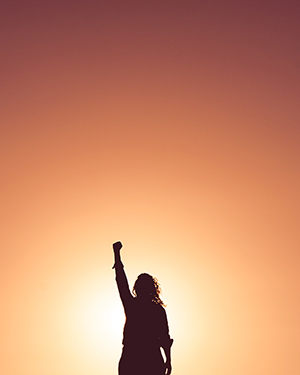
Although that’s my traditional schedule, it’s not every day. Sometimes I have to listen to my body and my mind and realize that you know what, I might need to sleep in an extra hour today. I might need to do something different to make sure that I’m in the right position for my family, so I can enter with the right emotional energy, the right mental energy to be able to serve them, in the same way, I would serve everybody else.
I’m very disciplined with that. I’m not asking anybody to do what I do. What I am asking people to do is to pay attention to how they define success. What are they trying to drive towards? Who are they? What are their emotional triggers?
Were you always this disciplined or did it build over time? Because you said you had a lack of energy and now it seems like you have so much energy. How do you get from there to here?
That’s a great question. Consistency, discipline, practice, lots of failure, lots of refining. I’ve always had a strong work ethic, I’ve always had a lot of energy, and I’ve always been relatively disciplined. Through the process of doing all these things, being in different businesses working in the nonprofit community, philanthropy. All these areas that I’ve had the blessings to be exposed to, you start to realize that you really do need to push the limits of your own limits. Every time you do that, you get more clear on areas that you’re going to crash and burn, where and how you need to calibrate when you get your rest and recovery.
You start to learn when you can trust and surrender, where you can leverage your time with other people. What are the things that only I can do that no one else can do, and if I can live in that realm of genius and stack teams around me to help do the things that other people can do, then I have the capacity to actually do what’s needed. This has taken years to develop and I’m still unlocking it.
To your point, you can hear. You said, oh, yeah, you always had high energy and you’re hearing right now, I’m operating in a vibration and a frequency that I’d never have. I’ve truly gotten to a place where I am free in a way that I want to free everybody else.
Why do you want to free everyone else?
Because everybody deserves to feel like I feel right now.
That’s nice.
I know what it’s like to feel like the only person in the room. I know what it’s like to not be seen. I know what it’s like to feel isolated. I know what it’s like to not feel worthy. I know what it’s like to feel confined. I know what it’s like to feel angry. I know what it’s like to feel shame. I know what it’s like to feel badly about myself or if I don’t fit in. I know all that. I also know what it’s like to chase all the whats in the world—what house, what car, what amount of money, what amount of success?
When you chase the what, you lose the who.
When you chase the what, you lose the who. I also know what it’s like to operate in circles where I’m running with people who’ve got everything based on the outside definition of success—money, pretty spouses, pretty kids, smart, fast cars, all this stuff, people making multiple six figures, seven figures, eight figures in some cases. So many of them are miserable and I was one of them. I know what it’s like to feel that way.
Nobody deserves to feel that way. Everybody deserves to feel like I feel right now. The further I get in my own evolution, the more convicted I am in the path that I’m on to help free other people.
If we could all do this, if we could all experience this so we could get rid of the tension, the resistance, the hate, the separation, the polarization, the politicization that separates all of us and makes us feel like we can’t be who we are in any moment of any day. If we can get rid of all that and we unlock each individual to chase their definition of success, focus on who they are, not having to fit into the confines and the boxes the world has created for so many of us, life’s a lot more beautiful place, my friend.
It sounds like it. I want to ask you about emotional triggers because this is one of the things that you help many people with. I think everybody has them. What’s your take on emotional triggers? Where do they come from? How do we handle them?
We’re a byproduct of our emotional triggers, behavioral patterns, and environmental conditioning. I could teach literally multiple days on each one of those topics. I’ll hit this as quick as I can in a short 3–5 minute answer to add value, but understand that emotional triggers might be one of the most complex things to navigate for any of us. It’s really hard, but we all have them. We absolutely all have them.
Emotional triggers are things that cause us to react or respond often without things that we even know what it’s connected to. An emotional trigger is getting upset or defensive when your spouse asks you to load the dishwasher a different way and you realize it has nothing to do with the dishwasher, it has nothing to do with your spouse. It has everything to do with how your grandma looked at you when you were four.
Having the emotional trigger pull you is where you create damage.
They put you into a position and emotional state that you don’t even realize you’re doing because you fall into the pattern. All of a sudden, you might create damage because you’ve chosen to react. Emotional triggers look like a 50-year-old woman who is a highly successful lawyer, who wanted to make it on her terms, and I’m going to abbreviate it just because I don’t know the audience here, but a ton of money. You can fill in the expletive there.
She’s already accomplishing this. But when she started to realize that the voices of all the men in her world drowned out her own voice, and that was what was keeping her self-worth and her shame on that self-defeating path, she realized that’s what she needed to do and freed herself to be able to do exactly what she wanted to accomplish.
It looks like a 43-year-old man who has been the greatest communicator on the planet. Wizard behind the curtain as he’s called himself for years building other people’s brands like John Maxwell and other people. But his lack of self-worth is what kept him behind the curtain. As he started to recognize that this was the emotional trigger that he needed to deal with, the pain that he needed to pursue, he’s now stepping out from behind that curtain and starting to put himself out there to build his own brand based on the skill set that he knows he can accomplish.
It looks like a 33-year-old female who grew up in a family of lawyers. Who never was told that what she wanted to do in the creative world was good enough. That her writing, her exploration, her painting, her tapping into the emotional side wasn’t good enough because it wasn’t making enough money, it wasn’t structuring enough. It gave her body image issues and had literal bulimia. All of these issues kept her stuck because whatever she did, whatever she wanted to do was never good enough.
When she started to actually turn into that and realize that, she unpacked it over the course of 18 months. Entered into a physique competition, ended up placing in her very first competition first place. Got her pro card and was able to stand there listening to the song from The Greatest Showman, This Is Me.
The thing is, emotional triggers look like everything that we deal with. Emotional triggers look like shame putting us into a defensive position when we have to stand up for something that we believe in holistically. It looks like shame making us feel small. Like I said earlier, triggers are designed to be pulled. Emotional triggers can either pull you or you can pull the trigger on your emotional triggers. Having the emotional trigger pull you is where we react. That’s where we create damage.
How do we pull the trigger on our emotional trigger? How do we pull the trigger?
You got to understand it, you got to walk through a framework. You need to first be aware, understand what it is. You need to own it. You need to know that yeah, I’m affected by shame, fear, guilt, scarcity, anxiety. You need to understand and be aware of it. Know that this is what’s happening, know that it’s not serving you and where you want to go, then you got to own it.
You literally have to own it, embody it, accept it, surrender to it, not get defensive around it, not get charged around it. Just own, this is something that’s happened. If you’ve created damage because you’ve reacted based on this trigger in your past, this is also where you own it with those people in your life to start build and repair. Then you need to unroot it. You need to literally get to the root or roots, or source or sources of that emotion.
Did your shame come from the fact that you’re always pitted and compared to your siblings growing up? What is it that nothing you did was ever good enough? Literally, get to the root of it. Was it that you grew up in a toxic shame-based culture and environment based on religion? Is it that you literally found an employer that you were stuck with because nothing you ever did was good enough and you always were questioned and always belittled?
Understand the roots, understand how they pattern in your life. Because once you understand the roots, then you can move through them. You can understand how these triggers move in your body. How do the different emotions literally move through the body? How do they manifest? Is it your face that starts sweating, the heat goes over you? You start to feel your chest racing, your heart racing, you’re short on breath, you’ve got a pit in your stomach? What is it?
How does this emotion move through your body? Once you start to understand those things, then you can start to tie those to the things that actually trigger that emotion. Oh, by the way, this is where it gets really complicated. Because shame or other emotional triggers show up multiple different ways based on multiple different triggers.
Nice. It’s a lot of work.

I’ll tell you for myself. Shame can show up. For me, I care about being a husband and father so much. They can show up as defensiveness that causes me to have to defend, because if my wife said anything like, oh, hey, are you going to spend time with the kids today? My trigger could spin me into that meaning she’s implying that I’m not a good husband, I’m not a good father, that I haven’t done all the things I need to do. So my defensive response will literally be to list the 10 things I’ve done in the last week to demonstrate I’m a good husband and father, instead of answering her question which wasn’t even charged.
It also could show up like, oh, by the way, I’m loud, I talk fast. People forever told me that I couldn’t do that. A shame trigger for me was I could be sitting in a meeting and somebody might try to quiet me or hush me. What happens in that environment for me is I literally make myself small, I bite my tongue physically. I don’t have the same response that I do, but it’s both a shame trigger.
Now I’m able to see how it manifests in my body for each and I’m able to tie it to distinct triggers so that I’m aware in those moments when I’m triggered. I can pause and ask myself the question, is what’s right in front of me true based on what I’m responding to, or is it based on a trigger that’s deeper than this and it has nothing to do with what’s right in front of me? Then we can pause in those moments and choose a different path. That’s how we start to escape emotional triggers.
That’s beautiful. Thank you for sharing so openly and vulnerably. That was really beautiful. What are your three top tips to living a stellar life?
Absolutely know who you are. That is absolutely the first one. Once you understand who you are, understand the emotional triggers, behavioral patterns, and environmental conditioning that have kept you on that self-defeating pattern of either self-sabotage, of not reaching your potential, of feeling stuck repeatedly because you’ve been chasing strategy and tactics. If you understand these things after you understand who you are, you then will know how to free yourself.
To live a stellar life, you absolutely have to give. Find a way to give an impact in any scenario that you possibly can. The reality is if you give and you learn how to receive, it becomes a perpetuating cycle where you can consistently feel good about who you are, feel good about who’s in your life, feel good about who you’re impacting. That to me is the definition of a stellar life because success to me is joy, freedom, and fulfillment. Those can’t exist without those three things.
To live a stellar life, you absolutely have to give.
That’s beautiful. Wow, thank you so much. This was really powerful and really beautiful. Before we say goodbye for now, where can people find you? I know you want to help billions and billions. If anyone is listening to this episode, please share it with your friends. If you find something that was just a highlight, just share. Share that lesson with a friend. Maybe send them the episode and let’s help Brian bring more light to this world. Brian, where can they find you?
So you can find me on my website, brianbogert.com. You can also find me @bogertbrian on any social handle. To your point, I want to impact a billion lives by 2045. What that means is that we’re very aware that 99.999999999% of those people will never pay us a dollar. We are very okay with that. Because we know those that choose to lean in, those that choose to invest in elevating where they’re at will substantiate all the resources necessary for us to actually make that impact take place.
Why I tell you all is that we created a lot of free content. We put a lot out there. The website, social media, you’ll see a lot of it. Whether it’s written articles and published in Forbes and other places, whether it’s vlogs, whether it’s Bogert’s Bullets and hard-hitting topics that will help you elevate and empower who you are in your life, they’re all there for you.
One thing if you want to take it a step further and I fully disclose this, if you go to nolimitsprelude.com, yes, it’s a funnel, yes, there’s an email exchange. But I want to tell you one thing definitively. It is a succinct download of a lot of our coaching philosophies to help you ask yourself the right questions to lead yourself on this intrinsic journey so that you can embrace the pains required to avoid the suffering in your life and get back to exactly who you are.
If you do go download it—and by the way, you have it and that’s all you need—take it and run. If you consume any free content, take it and run. We are never going to convince somebody to buy anything in our personal development space in those entities. Because if it’s not right for you, if it’s not aligned, if it doesn’t move you, if it doesn’t resonate, we’re not the right place for you.
If something does, and any of the free resources are given to you, all we ask is that you share it with someone else that can see it because that is how we have a collective impact to get to a billion lives because I can’t do it, our team can’t do it alone. We need all the help we can get.
Nice. Thank you so much, Brian. I really appreciate everything that he shared with us today, and your brilliance, your story, and your vulnerability. Thank you so, so much.
Orion, thank you for the opportunity, and thanks for building the platform to put good in the world. That’s the only reason I’m even here today. Thank you.
Thank you and thank you, listeners. Remember to know who you are. Find a way to give and learn how to receive. Feel good about who you are and have a stellar life. This is Orion, until next time.

